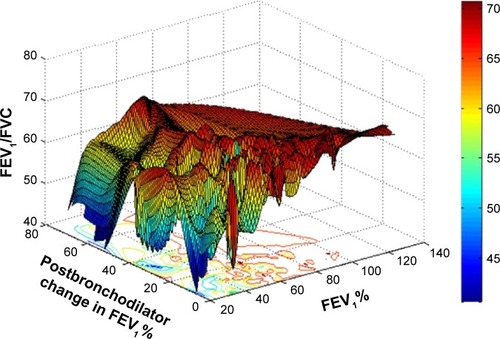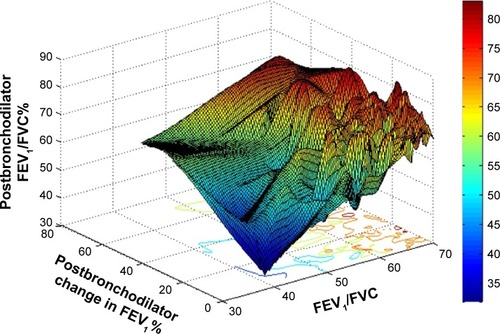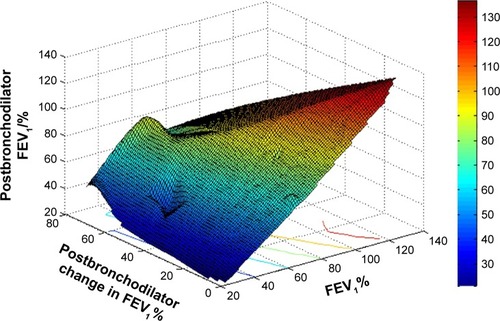Figures & data
Table 1 Characteristics of patients
Table 2 Groups and reversibility ratios of patients
Table 3 The demographic and spirometric results of groups
Table 4 The reversibility and postbronchodilator results of groups
Figure 1 Distribution of patients.
Notes: The relationship between postbronchodilator change in FEV1% and basal FEV1% in groups: Group 1 (asthma), Group 2 (ACOS), Group 3 (chronic bronchitis), Group 4 (emphysema), and Group 5 (UNDO).
Abbreviations: ACOS, Asthma–COPD Overlap Syndrome; UNDO, undifferentiated obstruction; FEV1, forced expiratory volume in 1 second.
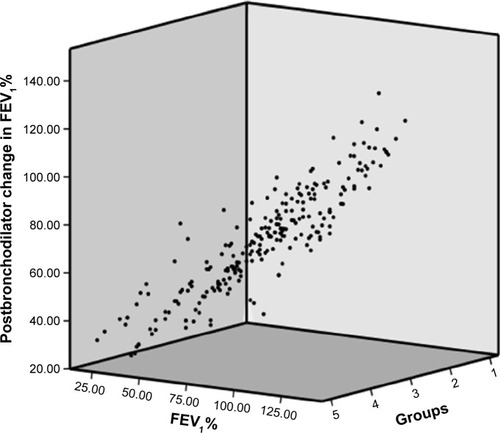
Figure 2 Distribution of patients.
Notes: The relationship between postbronchodilator change in FEV1/FVC% and basal FEV1/FVC in groups: Group 1 (asthma), Group 2 (ACOS), Group 3 (chronic bronchitis), Group 4 (emphysema), and Group 5 (UNDO).
Abbreviations: ACOS, Asthma–COPD Overlap Syndrome; UNDO, undifferentiated obstruction; FEV1, forced expiratory volume in 1 second; FVC, forced vital capacity.
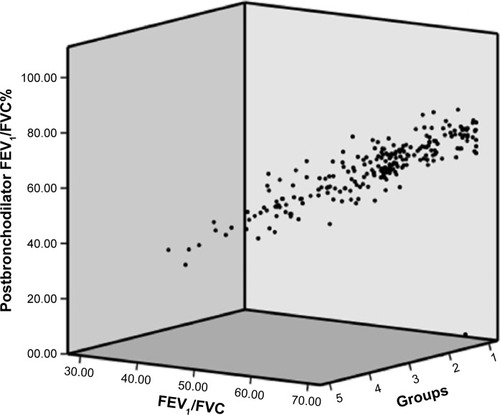
Figure 3 The MATLAB 3D figure showing the relationship between FEV1, postbronchodilator change in FEV1%, and basal FEV1% of patients.
Abbreviations: FEV1, forced expiratory volume in 1 second; FVC, forced vital capacity.
